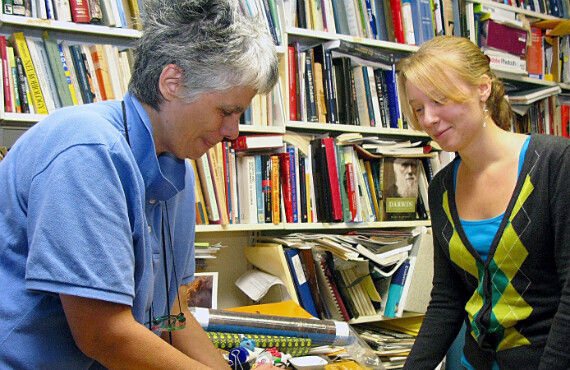Penn Museum Mummies Contribute to Emerging Medical Understanding of Atherosclerosis
Atherosclerosis, or hardening of the arteries, has been widely assumed to be a disease of modern times, brought on by modern foods and lifestyles — until now.
A recent study of 137 mummies from four regions of the world — including five Ancestral Puebloan mummies from the American Southwest, circa 1500 B.C.E. to 1500 C.E., in the University of Pennsylvania Museum of Archaeology and Anthropology collection — revealed clear or probable signs of atherosclerosis in 34 percent of the international group, dated from about 4,000 to 110 years old, with individuals who died between the ages of 2 and 60. The surprising prevalence of the disease among such a large percentage of pre-modern humans raises the distinct possibility that people have long had a more basic predisposition to the life-threatening disease.
Such was the conclusion reached by a group of scientists, presenting their paper in the March 10 online edition of the medical journal The Lancet. Janet Monge, associate curator in the Penn Museum’s Physical Anthropology Section, and Samantha L. Cox a former Penn undergraduate student, were coauthors on the study, which was led by Randall C. Thompson of Saint Luke’s Mid America Heart Institute and the University of Missouri–Kansas City School of Medicine.
Of the five Penn Museum mummies in the study, one was probable and one was deemed definite for the disease.
The mummies in the study came from a variety of populations with vastly different diets. Some of the peoples were foragers eating a wide variety of wild-origin plant foods with some non-domesticated animals. Others came from societies that subsisted on cultivated grain products. Across all of these cultures and peoples, atherosclerosis was present, especially in those who lived past the age of 30. The indication is that humans develop atherosclerosis independent of diet and that this may be a ubiquitous condition across human populations throughout time. Diet appears to be a relatively minor component of the disease.
Support for the research came from the National Endowment for the Humanities, the Paleocardiology Foundation, Siemens, the National Bank of Egypt and the Saint Luke’s Hospital Foundation of Kansas City.








